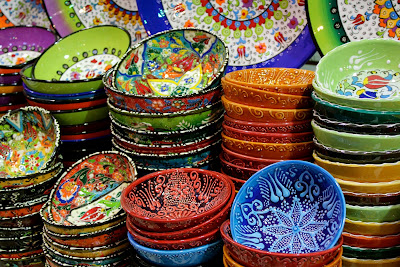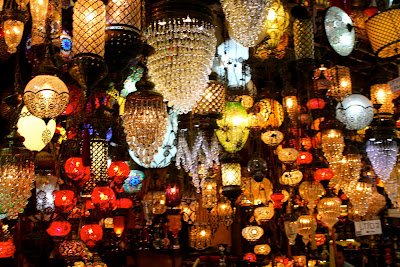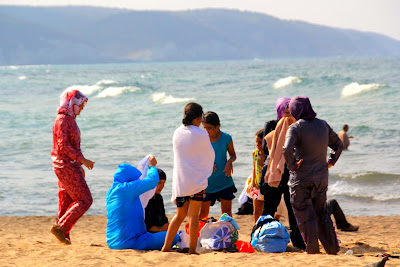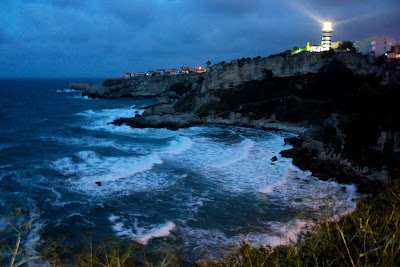The Grand Bazaar is one of the most known and
‘must see’
places in Istanbul. It was constructed not long after the
Ottomans took over
Constantinople and was inspired by Sultan Mehmet the Conqueror
in 1455. Over many
years, the bazaar has undergone expansions, fires and
earthquakes…yet still
remains a center for commerce in the old city even today. It
started as a forum
for textile merchants to sell their goods, then expanded into
luxury and
textile goods. Now it is a showcase of textiles, jewelry,
antiques, carpets,
instruments, and (as expected for a major tourist attraction)
souvenirs.
When I walked in for the first time, it was
an overwhelming
site. A large domed street stretches on with side domed ally
ways leading off
in all directions coaxing you to wander down every isle. Every
shop is brimming
with eye-catching colors and textures.
People are everywhere…. strolling along
gazing at the goods;
rushing down streets carrying trays of tea for visitors; men
delivering
carpets; women trying on their newest piece of jewelry, shop
keepers welcoming
you into their stand in all the languages they know until you
acknowledge them;
children holding their mother’s hand exhausted and ready for a
nap; and those
more interested in photographing everything with little
intention of purchasing
a single thing.
I walked into a scarf shop and immediately a
man had noticed
which scarf I was eyeing, brought it off the shelf, fluffed it
out, let me feel
it, then effortlessly draped and tied it around my shoulders in
the most
exquisite fashion I have EVER seen. This man knows his scarves.
They all do.
Another scarf shop with amazing patterns in
every direction
was a breath of fresh air. The shopkeeper has been in Istanbul 6
months and has
been learning Turkish. He is from Syria, and his English is
quite good! He
demonstrated (on me) the way a lady ties her scarf if she is
married or if she
is single and gave a few pointers on how to find authentically
‘made in Turkey’
scarves. He said, ”If it is a Pashmina, it’s from India; if
someone says it’s a
hand embroidered Turkish scarf, they are lying because we do
not hand embroider
scarves in Turkey…they are undoubtedly Indian; if it’s Alpaca
wool then it is
from Peru; and camel hair scarves are from Syria. If you want
Turkish made, look
for the thin and raw silk scarfs with printed patterns on them.
All the rest
are probably from somewhere else.”
With all the shopping at the Bazaar, you will
most probably
need a pick-me-up during the day. If this is the case, flag down
a man carrying
tea or better yet, take a seat at one of the corner cafes. You
can get a
Turkish coffee and watch all the action simultaneously!
Also, if you find yourself have had too much
tea and need a
place to relieve yourself, look for “Tuvalet” and the signs Bay
(Men) and Bayan
(Women). In my experience at the Grand Bazaar, the men are free
to walk directly into
the facilities but a woman is instructed to ring a doorbell. A
few moments
after the ‘ring’ a man appears with a key. He will open the door
for you, ask
if you require paper (from a paper towel roll), and kindly close
the door
behind you. You will then encounter (maybe your first) “eastern
toilet.” This
contraption consists of a hole in the ground and a rope hanging
from the ceiling. Do not be alarmed! This is typical and is
actually more common for
public and government building restrooms than the more familiar
“western toilet.”


















































